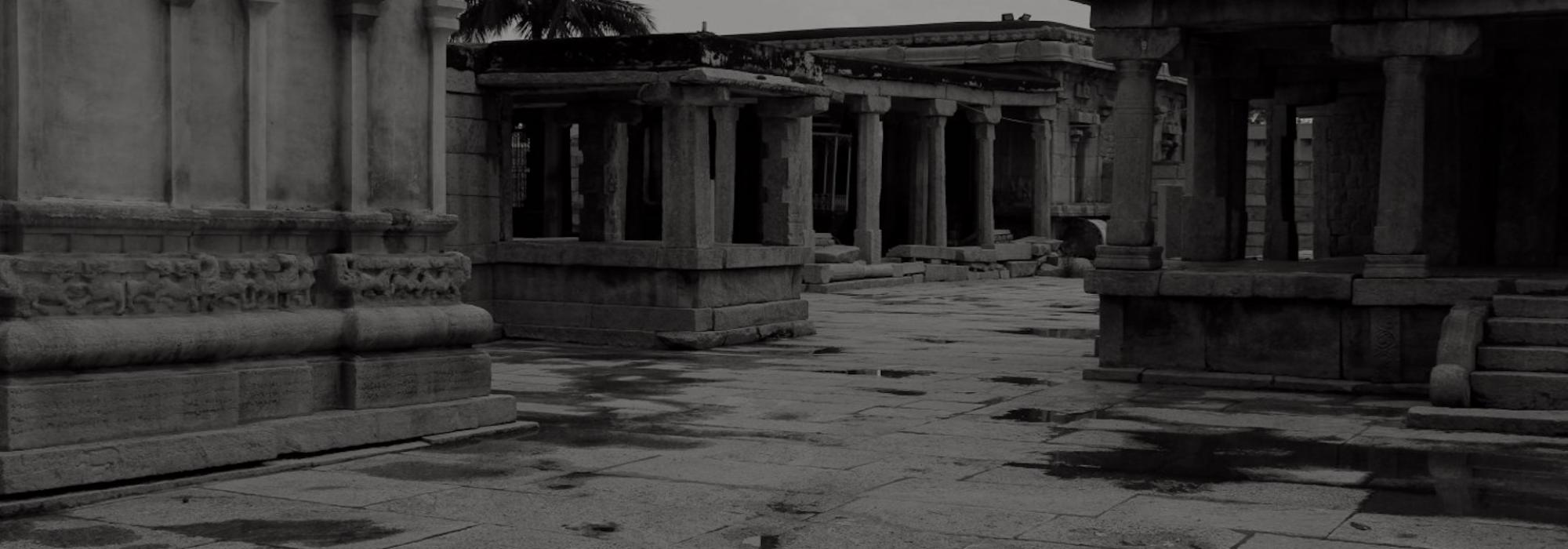Sometime in 1898-99, my Sanskrit Guru, Sri Kashi Raghavendracharya addressed about four or five of his disciples thus:
“Hey! In four or five days from now, Sri Chappalli Visweshwara Sastri will come to town for his son’s wedding. He’s coming from Bangalore. He’s a towering Vidwan. Behave yourself! Don’t do mischief in his presence! Beware! If any matter relating to our Sastras comes up for debate in either the Temple or in the wedding hall, none of you must interfere with it. Seal your mouths tight. If you wag your tails before Sri Visweshwara Sastri, it’s akin to entering a tiger’s mouth.”
I was a mere lad. I had not even had a whiff of any Sastra. Also, I hadn’t heard of Sri Chappalli Visweshwara Sastri’s name prior to this. But the “tiger’s mouth” analogy gripped my imagination. The curiosity to see this person was aroused.
The aforementioned marriage took place on a grand scale. The groom was Sri Chappalli Visweshwara Sastri’s eldest son, Sri Kashipati Sastri. He was a learned Vidwan in Sanskrit literature. He later passed his Engineering degree and became an officer in the Public Works Department.
The bride Lakshmi Narasamma, who was about two or three years older to me was like my elder sister. Her father, Sri Lakshmi Narasappa was a schoolmaster. Her mother was Srimati Bhavaanamma. They were a deeply traditional family endowed with a gentle and equanimous temperament and had earned the respect of everyone in our town. Our homes were at a very short distance. Both our families shared a very close bond.
The Tulsi plant in Sri Lakshmi Narasappa’s home has remained firmly etched in my memory. It was as tall as an average human, its branches thick as a thumb. The branches were plump enough to make a Tulsi-Mani (Tulsi beads, from which a string or necklace is typically made). A random person would typically ask this question: “This Tulsi plant has grown so lushly—what do you do to make it grow so well?” To which Sri Lakshmi Narasappa would reply: “That’s because of the manner in which we cultivate it.” Nobody knew what that method of cultivation was. I’ve not seen any Tulsi plant grow like that, like a tree, anywhere else.
Another sub-story is also relevant.
Sri Subbaramayya
Sri Lakshmi Narasappa’s maternal uncle, Sri Subbaramayya (alias Ramasubbayya) was a great Vidwan. He lost his wife when he was about sixty. He didn’t have any progeny. After his wife’s death, Sri Subbaramayya donated the utensils, pots, and vessels to various temples and charitable houses and to other poor Brahmanas. He took whatever little cash he had and travelled to Kashi and after some time, became a Sanyasin.
Unable to let go of the attachment he had developed towards this maternal uncle who had brought him up, Sri Lakshmi Narasappa frequently wrote him letters, urging him to return. On his part, the maternal uncle who had now become a Swami (or Sanyasin) replied saying that it was not proper for him to return as it was unsuitable for a Sanyasin to develop any sort of attachment and bond. However, this did not console Sri Lakshmi Narasappa. He continued to send him repeated letters.
In the end, the Swami came to Mulabagal out of compassion. He was lodged in the charitable rest house for three days. He slept as usual on the third night and didn’t wake up the next morning. He had left his mortal body at some unspecified time during the night. His corpse was taken to the large Pushkarini named Shankaratirtha located about three-fourths of a mile to the east of Mulabagal and buried in the Southern side of the Pushkarini.
I’ve seen a mound made of mud on top of this Samadhi (grave). I have circumambulated around it and offered my Namaskaram to it. There’s another Brindavana (akin to a Sacred Grave) next to this mound. It was built in honour of Sri Krishnananda Swami, a Yati (or Sanyasin) belonging to the Bhagavata (Vishnu) tradition.
In the period that I am talking about, people who were regarded as noble and as role models had spiritual liberation and not wealth as the goal of their lives. Sri Lakshmi Narasappa’s monthly salary was about seven rupees. But the serenity of mind he possessed, the compassion towards all creation that he was endowed with, and the innate joy he exuded is rare to find in people who earn a salary of five thousand rupees today.
To be continued











































